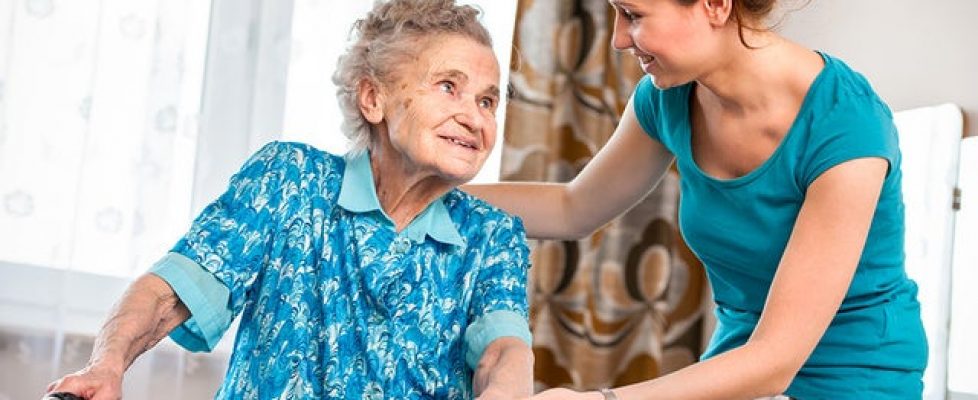Why telehealth is here to stay: The opportunity for senior living
Imagine an 87-year-old woman living in a senior living community. She falls on her way to the bathroom, hurting her hip and hitting her head. She is able to call for help and the night staff comes to her room.
The young man on duty helps her back in bed but knows she needs medical attention. He types her name into the iPad on the wall and immediately is connected with an emergency department doctor.
The physician introduces herself, asks a few basic questions, and directs the night staff employee through a physical examination. She then directs the night staff employee to take a photo of the resident’s eyes to include in a neurology consult.
The physician reassures the woman that everything is fine for now but that she will need to get an x-ray in the coming days. The physician also explains that she will deliver the news from the neurologist in the morning, but there is nothing to worry about now.
The woman is able to fall asleep and wakes up to a message from her emergency department physician and a neurologist providing her detailed instructions around her care plan and the next steps — reassuring her she will be alright. She shares the videos with her senior living community staff members as well as her children and grandchildren.
How was this possible? First, the senior living community had synchronous primary and urgent care telehealth services. The operator of the property already had gathered key health data, emergency contacts and consent, all of which were integrated into the in-room tablet and HIPAA-compliant telehealth portal. The telehealth emergency department physician was able to immediately access the key information and pair it with the incident requiring medical attention.
Second, the operator and telehealth provider had asynchronous telehealth services for specialty care and video communication. This enabled the hospital physician to access specialists and receive care plan guidance within hours while also communicating key information to the resident in a shareable, repeatable and personalized video message. This solution is what enabled the woman to have a neurology consult without leaving her room and receive a summary of her experience and next steps to re-watch, show her staff nurses and share with concerned family.
At the beginning of 2020, in response to the spread of COVID-19, the Centers for Medicare & Medicaid Services used emergency rulemaking to provide Medicare telehealth flexibilities for the duration of the pandemic. This expanded the list of telehealth-eligible services, provided tech mode flexibilities and expanded the types of practitioners eligible to provide telehealth services. Adoption skyrocketed, both by physicians and their patients, primarily older adults.
Likely the greatest need – and potential reward – for telehealth is in senior housing and care. The older adult population accounts for the highest proportion of medical costs in the United States, driven by emergency department visits and inpatient stays. Many times, conditions are worsened by travel and unnecessary exposures, which are avoidable with telehealth. This population also is eligible for value-based care (that is, capitated Medicare Advantage plans), which eliminates the incentive for excessive doctor visits or procedures and instead encourages timely and preventive care.
Senior housing and care communities are home to more than 3 million older adults, most of whom have multiple chronic conditions, offering immediate economies of scale upon adopting a new solution. These communities largely have the power to control access and devices, while the expertise needed for physical examinations usually is available on site, oftentimes eliminating the need for in-person visits entirely.
The pandemic has brought with it heightened fear by older adults and their adult children of traditional healthcare delivery settings, such as the hospital, the emergency department, and even the waiting room of the physician’s office. Seniors increasingly both want and need to have healthcare services brought to them where they live.
In addition to reducing emergency department visits, readmissions and unnecessary COVID-19 exposures, effective use of telehealth can empower front-line staff and significantly improve the resident and family experience. Telehealth has the potential to drive incredible value for residents and providers alike within seniors housing by offering residents safe and timely care. This is no longer a vision of the distant future. The solutions are ready and available – operators will need to understand their options but there are now far fewer barriers to adoption.
In his recent “NIC Talk,” given at the 2020 NIC Fall Conference, Tim Ferris, M.D., CEO of the Mass General Physicians Organization, said that when it comes to the use of telehealth to bring services to older adults with chronic conditions, “We are not going back.” Indeed, telehealth offers critical tools to enable senior housing providers to proactively manage the chronic conditions of their residents and have onsite triage capability, enabling this high-risk population to stay at home. The immediate necessity of telehealth due to the pandemic will diminish soon, we hope, but continued investment and use will be critical to enabling older adults to have healthcare come to them rather than them being shipped out for their healthcare, often against their, and their families’, wishes.

